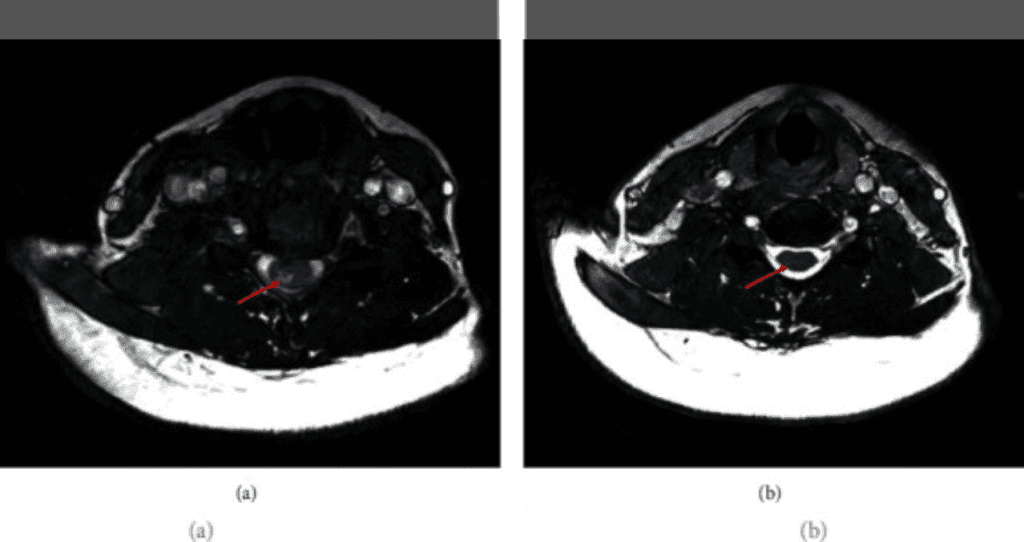Neuromyelitis optica is also called myelomegaly optic nerve spectrum disorder or Devic’s disease.
Magnetic resonance imaging of T2-weighted sequences of the cerebrospinal cord. Photo: A case reported at the US National Library of Medicine.
A Puerto Rican woman suffered from intractable hiccups for about 15 years, unaware that this was just a syndrome of a central nervous system disorder, known as optic nerve myelitis (NMOSD), which is raising a medical alert among health professionals, in the face of this type of diagnosis that may go unnoticed.
The reported case is that a 46-year-old woman had an intractable hiccup when she was 31 years old (2004). During the operation, she was admitted to a hospital in New York, where her condition has yet to be diagnosed, despite the fact that she has lost much of her sight in her left eye, according to data from the report.
After nearly 15 years since his first symptoms, and two severe relapses, he received an official diagnosis of NMOSD in March 2019, when he arrived in Puerto Rico in search of a neurologist, Dr. Angel Chinea, who ordered an MRI study for NMOSD. Brain and cervix, along with an antibody test against Aquaporin (AQP4).
Additionally, the case report states that she was treated with 500 mg of intravenous methylprednisolone for three days to reduce symptoms. After evaluation of the studies performed, the patient formally received a diagnosis of NMOSD.
Treatment with rituximab – a monoclonal antibody – began in April 2019. However, a lack of response to treatment led to a change in treatment with eculizumab – another monoclonal antibody – in August 2019.
The patient underwent an MRI of her cervix and brain again in 2020, which showed a significant reduction
In swelling and excessive severity within the cervical spinal cord without lesions, compared to the first MRI of 2019. In addition, the patient had no new relapses.
However, this significant reduction does not occur in all patients with NMOSD, but more awareness of the disease is needed, especially in Puerto Rico, argue the case authors, which in turn demonstrates the efficacy of eculizumab treatment and the importance of distinguishing clinical treatment. Histopathological and neuroimaging features separating inflammatory demyelinating autoimmune disorders, such as NMOSD and multiple sclerosis (MS).
The optic nerve myelitis It is a central nervous system disorder that mainly affects the nerves of the eye (optic neuritis) and the spinal cord (myelitis). The optic nerve myelitis Also called spectrum disorder optic nerve myelitis or Devic’s disease.
access to the case over here.


:quality(85)/cloudfront-us-east-1.images.arcpublishing.com/infobae/VWWQ37HV5ZERLPFWQKUG6JD2CQ.jpg)

:quality(85)/cloudfront-us-east-1.images.arcpublishing.com/infobae/V7GOG2JDGBC4BA6UGMQQ7FRZAM.jpg)




